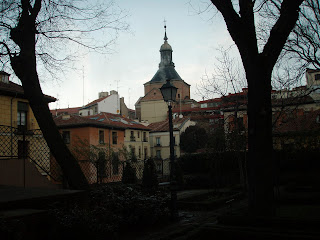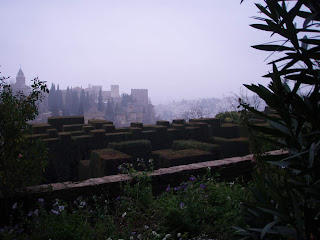
My day in Granada - what can i say, Alhambra is incredible, dream-like and totally worth a visit in one's lifetime - despite the crowds, despite the price, planning, ticketing etc - the spotlight of my trip, it even overdid Prado, and that is to say! I took over 200 pictures - and anyone can convert into being a photographer in this inspiring, geometry-filled place.
I started the visit in the opposite direction of the crowd flow, and went first to the Generalife gardens
(that's where the view on the Alhambra fortress in the morning mist above comes from), what used to serve as a summer house for the Sultan during the Islamic rain. Not much remains of the house, but the gardens are incredible. They were remodeled over time, like most of Alhambra, and that adds to their charm:

The insides of the Ismail tower gives a taste of things to come in the other palaces. The interior decoration used to be split into two parts by the Islamic architects - lower part, called dado, with multi-colored tile decoration that would withstand numerous contacts with the outside world
(not preserved to our times on the picture below) - like we do in the swimming pools -, and higher part with stucco, creating mocarabes, this incredible effect you can see on the picture below. Most of the decoration used calligraphic writing or colorful geometrical forms, color that mostly disappeared from the walls today. Thus poems about the Sultan commissioning the room run around the inside walls, telling us his prominence and glory.
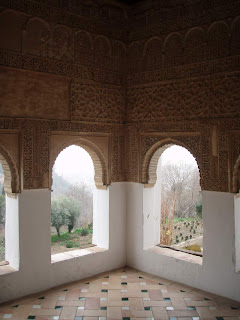
I started the visit of Alhambra proper by the El Partal Palace, a perfect photo opportunity (nenuphar gardens recreated in the 19th century):

The Nasrid Palaces are the jewel of the place, and with tourist inflow their visit has been limited to 30 minutes, with time spots to reserve during each day. As there was no real control of when one gets out of the palaces, i stayed several hours taking pictures and falling in love with this place.
There are actually two palaces that create what is known as Nasrid Palaces, called that because of the last Nasrid dynasty of the sultans that ruled Islamic Granada before its final fall in 1492 and built the royal residency in the 14th century: Comares Palace and the Palace of Lions. Charles Quint appreciated them so much that he established his own residence in the old Arab palaces instead of using his newly built Collesium-like villa just behind them. Concerning the Charles Quint palace, someone called it a meteorite that landed by chance in the middle of Alhambra - and that is exactly what it felt like to me.
This is a picture of the entrance to the Comares Palaces, as visitors saw it when introduced there by the Sultan. The door on the right led to the harem and the living quarters, door on the left to the Myrtle court and the throne room.

The court of the Myrtles, after the shadowed corridor following the left-side door above looks like this, with the immensely high (35 meters) throne room behind it:

The decoration of the rooms alongside the court uses stucco and mocarabes to their fullest:

From the Myrtles court Charles Quint made a direct door to the second palace, what is now known as the Palace of the Lions. The picture below represents one side of the Lion's court, probably the most famous place in the Nasrid Palaces. Unfortunately the fountain was fenced off and lions were being restored, as well as the Kings' room, - which made me take 30 pictures less of the place, still incredibly beautiful:

Pictures by Juan Laurent of the same place, the Lion's court, but from the 19th century. His pictures did a lot to make Alhambra a popular tourist destination - and develop travel monument photography.

And the last thought - about cats - Granada is also somehow a city of cats. I saw so many of them around Dario river, in Alhambra and on the Albaicin that i couldn't believe it in the end. It does go with the town's mysterious and accommodating nature. And cats made me think about this painting by Dirk de Vos that i remember from Prado - the cats fight for dead prey. I cannot find it on the net as it's not that popular, it is rather peculiar.
The only thing i haven't seen is a granada tree with fruits on!
 The tour is an upside-down kind, first it took us to Titlis's summit, an easy 200m walk up from the top of the lifts, and than down to the valley on its other side, a more technical undertaking requiring a couple of rapps. Approaching the first rappel station, limestone peaks look very much like the Canadian Rockies. We are on our way down to the Wenden valley, where the famous summer climbing destination, Wendenstock, is.
The tour is an upside-down kind, first it took us to Titlis's summit, an easy 200m walk up from the top of the lifts, and than down to the valley on its other side, a more technical undertaking requiring a couple of rapps. Approaching the first rappel station, limestone peaks look very much like the Canadian Rockies. We are on our way down to the Wenden valley, where the famous summer climbing destination, Wendenstock, is. Usually this tour is done in a day, but as we wanted to make last the pleasure, we continued up and down to the SustliHutte, boys running up Grassen summit, and myself following the arretes to the col. Good swiss hutte, welcoming as always - although gas was not working, we had to do the cooking over the wooden stove.
Usually this tour is done in a day, but as we wanted to make last the pleasure, we continued up and down to the SustliHutte, boys running up Grassen summit, and myself following the arretes to the col. Good swiss hutte, welcoming as always - although gas was not working, we had to do the cooking over the wooden stove.


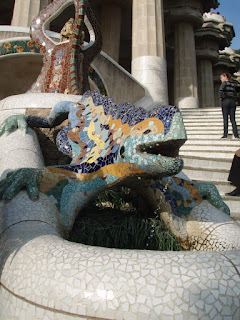
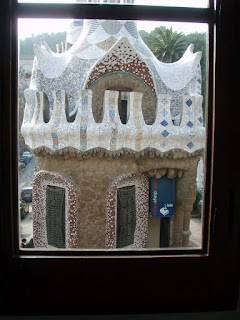
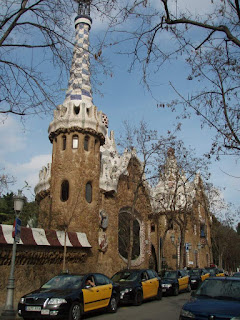
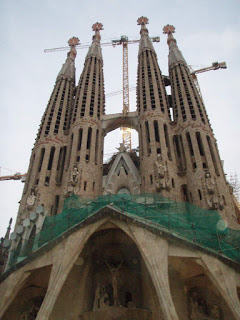
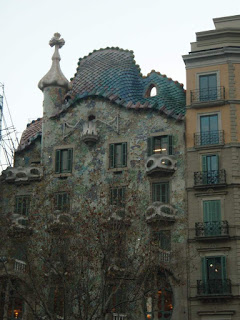



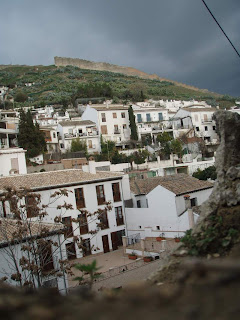
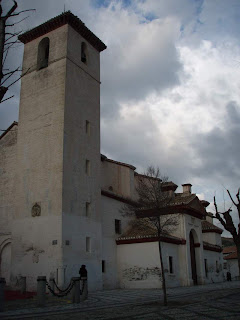
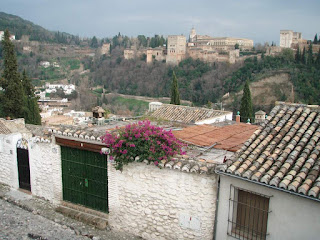
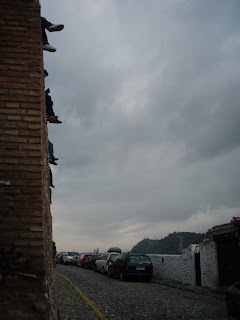
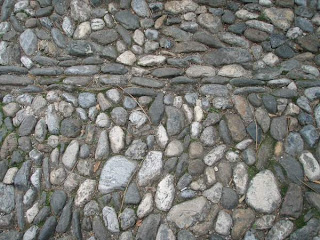









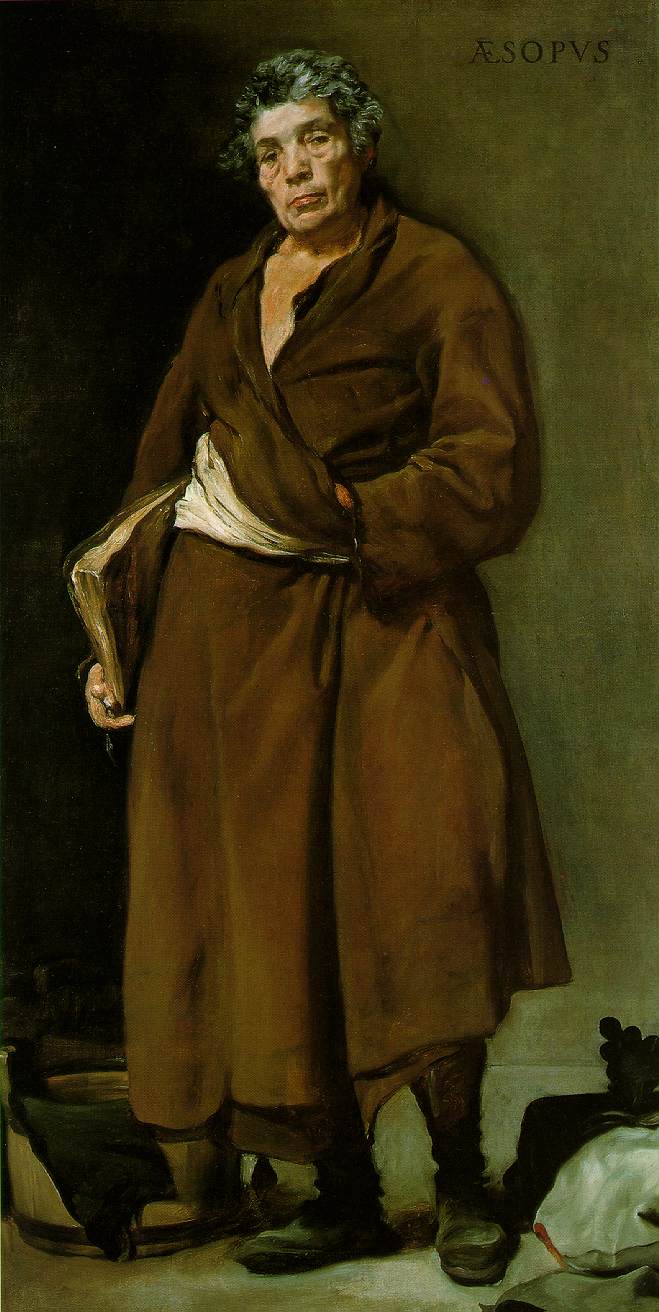
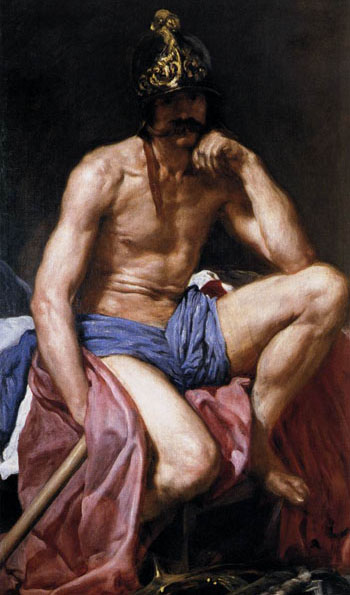









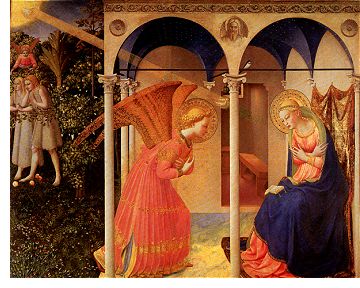 And Messina's dead Christ with an angel, something close to da Vinci or Ruben´s angels, but again so movingly human, it could by itself resume the whole Renaissance:
And Messina's dead Christ with an angel, something close to da Vinci or Ruben´s angels, but again so movingly human, it could by itself resume the whole Renaissance: Being religious or not, one has to appreciate religion for giving the impetus to the existence of all this art. In Prado, there is no way of getting around religion. And each painter seems to have his Pieta in there, pick and choose the one you like! My two favorite ones are Flemish, Van der Weyden´s Descent from the Cross - that was originally destined for Isabella the Catholica and Fernando's burial chapel in Granada:
Being religious or not, one has to appreciate religion for giving the impetus to the existence of all this art. In Prado, there is no way of getting around religion. And each painter seems to have his Pieta in there, pick and choose the one you like! My two favorite ones are Flemish, Van der Weyden´s Descent from the Cross - that was originally destined for Isabella the Catholica and Fernando's burial chapel in Granada: And Anton van Dyck´s Pieta, that beats them all - maybe not Michel Angelo's, but that's in a different register:
And Anton van Dyck´s Pieta, that beats them all - maybe not Michel Angelo's, but that's in a different register:



 This is the Catedral de Nuestra Senora de Almudena in the morning light, that reminded me of our St George's Cathedal in Lviv.
This is the Catedral de Nuestra Senora de Almudena in the morning light, that reminded me of our St George's Cathedal in Lviv.
